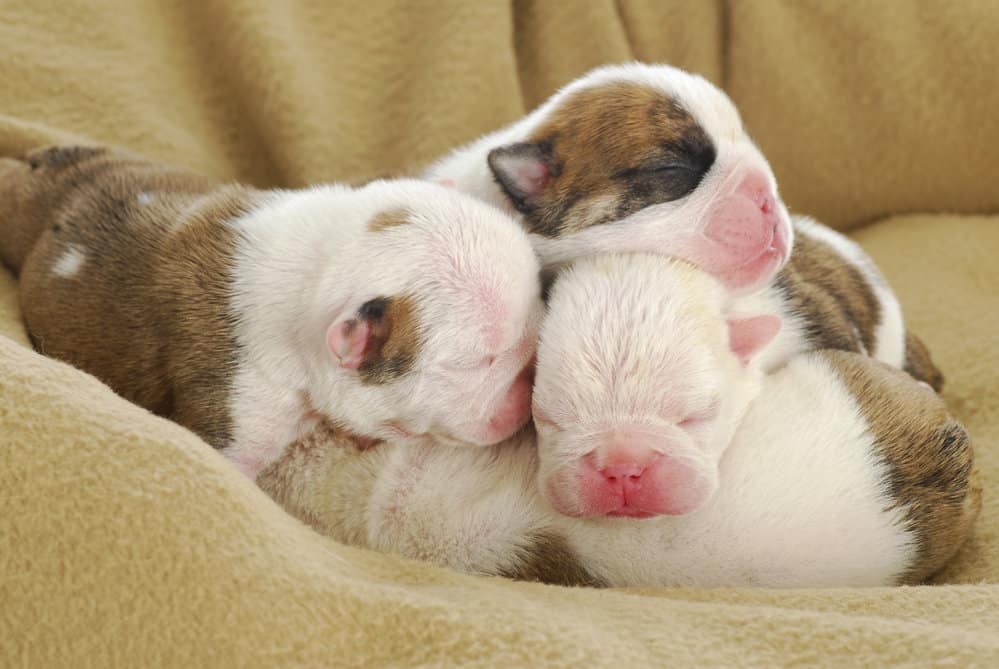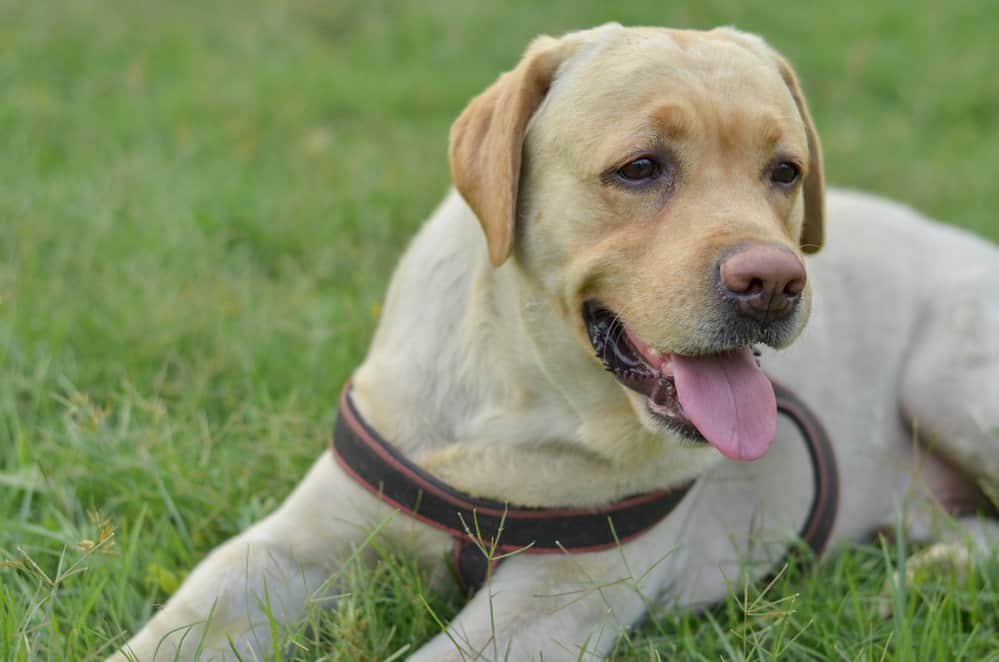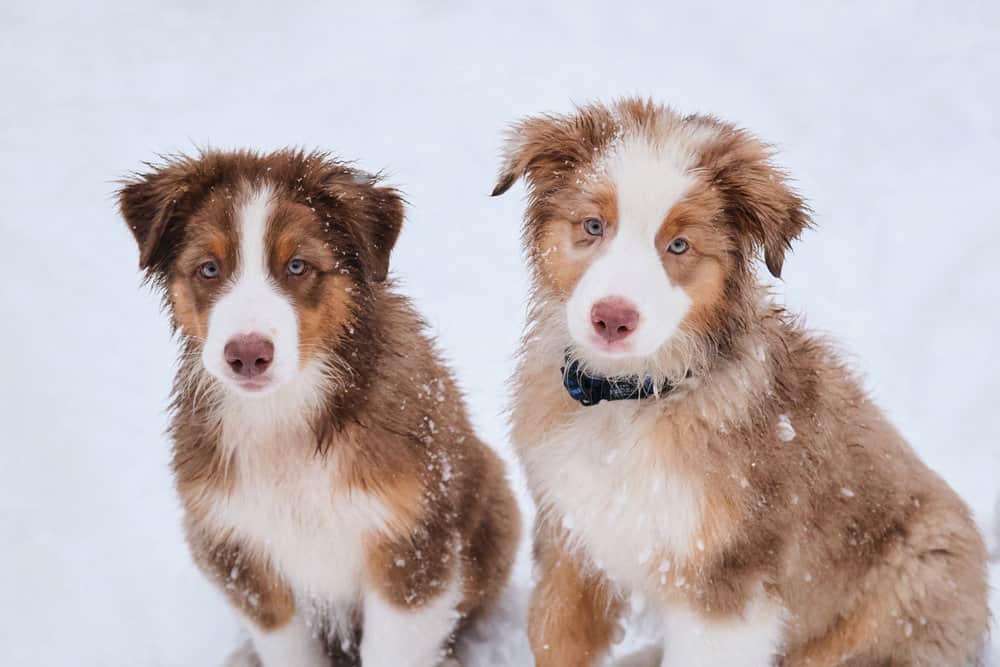Most puppy breeds are born with pink, flesh-colored noses. Then, when they’re about eight weeks old, their noses begin taking on a darker hue.
After that, gradually, their noses will become completely black over the next few months. Exactly how long this process takes depends on the puppy’s breed.
On the other hand, some dog types keep their pink noses all their lives. So, scroll down if you’re interested in finding out whether your puppy’s nose will turn black or stay pink.
Which Breeds Have Black Noses?
Many typical dog breeds are known for their cute puppies that are born with bright pink noses. This is mainly due to a lack of melanin, or skin pigmentation—the less the melanin, the lighter and brighter the shade of pink.

Then, as they age and mature, the pigment starts to kick in. When this happens, their pink noses turn black.
This process usually starts when they’re around eight weeks old. Some breeds begin later, when they’re about 12 weeks, while others grow into full adults before their noses turn black.
Here are some of the most common dog breeds that are born with pink noses and are likely to turn black:
- Samoyeds
- Irish Setters
- Poodles
- Golden Retrievers
- Labrador Retrievers
- French Bulldogs
- Pugs
- Border Collies
- Beagles
Helpful Dog Health Resource:
Note: Our Health is #1 Priority. It should be no different for your dog. But you need to help him. The Ultimate Guide to Dog Health is the answer. This handy guide will help you recognize the symptoms of the health problems above. Get the knowledge to stay ahead of these terrible issues that can rob your lovely dog from vigor and life. Help your friend make it to 14 yrs+ without pain and suffering.
How Do I If My Puppy’s Nose Will Change?
Knowing whether your puppy’s pink nose will change into black largely depends on his breed. So, take a look at your pup’s Mom and Dad, and see what color nose they have.
The other way to know for sure what color nose your pup will have as an adult is to just wait it out and give it time.
That said, however, there are ways to determine early on what color his nose will be as an adult.
Ask yourself: does your puppy have a nose with splotches of pink and black? Then, it’ll most likely turn into black as soon as your pup is between 8–12 weeks old.
The same applies if your puppy has a splotchy nose with a combination of pink and liver. Then, this means he’ll probably end up with a liver-colored nose when he matures into adulthood.
Common Dog Nose Colors
Dog noses come in all types of colors and pigmentations. The main determining factor is the breed type.
Other indicators are related to medical issues, as well as more simple causes, such as the weather.
Dudley Noses

Dudley noses refer to dog breeds that are born with pink or liver-colored noses that are supposed to turn black as they mature. Yet, for some reason, their noses retain the pink color.
In other words, a ‘Dudley’ nose is a term used to refer to a fault in breeding.
The term comes from the name of an area in Black Country in Worcestershire. It’s where breeders were known for mainly breeding bulldogs with pink, flesh-colored noses.
A few examples of dogs prone to develop a Dudley nose are:
- White German Shepherds
- Poodles
- Pointers
- Golden Retrievers
- Irish Settlers
- Doberman Pinscher
Liver Noses
Liver noses refer to dog noses that appear to be reddish-pink rather than the bright pink-colored nose of a newborn puppy.
Puppies born with liver-colored noses will retain this color their entire lives. Although, their noses can go through slight color changes over the years as a result of age, weather conditions, as well as how much sun exposure they’re getting.
Dogs with liver noses include the following:
- Siberian Huskies
- Pointers
- Nova Scotias
- Field Spaniels
- English Springers
- Cocker Spaniels
- Australian Shepherds
Butterfly Noses
A Butterfly nose refers to dog breeds born with splotchy-colored noses. These usually have a mix of black and pink colors on their noses that remain with them all their lives.
On some breeds, the black spots resemble a butterfly's wings, hence the name.
Some breeds that have these unique colored noses are:
- Dogo Argentinos
- Bull Terriers
- Boxers
Snow Noses

Snow noses, also called ‘winter noses,’ are more common in dog breeds that live in areas where it’s cold for most of the year.
This skin condition, commonly referred to as ‘hypopigmentation,’ is when dogs’ noses turn a lighter shade of pink when the weather is cold. Then, their noses return to their original black color during the warmer months.
However, there have been rare cases where dogs that don’t live in extremely cold areas have also developed this color change.
While the exact cause is still undetermined, some experts suggest that it’s all because of one enzyme, known as Tyrosinase. This enzyme helps promote the production of melanin, or skin pigment.
Since Tyrosinase is temperature-sensitive, it could be the reason behind the color changes in these dogs’ noses.
Whatever the cause, Snow nose is nothing to be concerned about. Here are some common dog breeds known to develop Snow noses:
- Siberian Huskies
- Labrador Retrievers
- Golden Retrievers
- German Shepherds
- Bernese Mountain Dogs
Helpful Dog Training Resource:
For help with training your dog, you should take a look at The Online Dog Trainer by Doggy Dan. Doggy Dan is an expert Dog Trainer based in New Zealand. His online resource contains Hundreds of Excellent Dog Training Videos that will take you step-by-step through the process of developing a healthy, happy well-behaved dog.
Caring for Your Puppy’s Nose
Just like our skin, dog noses are sensitive to the harsh rays of the sun. Yet, pink noses, especially, are more susceptible to sunburns.
They lack the pigment, or the melanin, that protects skin cells against sunburns and skin cancer.
Dogs with pink noses are genetically predisposed to be sensitive to the sun. This makes them more likely to develop nasal solar dermatitis, which is sometimes referred to as ‘Collie nose.’
This type of abnormal skin reaction to the sun is more often seen in Collies, Shetland Sheepdogs, and German Shepherds.
So, if your dog has a pink nose, make sure to apply a layer of sunscreen on it if you’re going to spend any time outdoors.
Do this no matter what time of year it is to prevent their noses from getting burned or inflamed. Remember that without the proper protection against sun rays, your dog’s sunburned nose can eventually lead to skin cancer.
Another thing to keep in mind is dry, scaly noses. This is more common in dogs with Snow noses because of the cold weather.
To make sure your dog’s nose is well moisturized, use a salve or skin balm specially made for canines.

Paul has been creating content for the dog niche for many years. The information he shares comes his first hand experience growing up in dog lovers household and then owning multiple dog breeds of his own as an adult. Paul enjoys doing the hard research to collect, analyze and present our dogtemperament.com readers with the best answers to their questions.